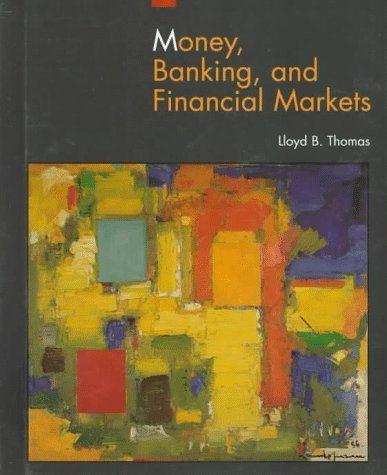Question
1. A one-year Treasury bill has a yield of 6%. A bond will pay $70 at the end of year 1 and $1,070 at the
1. A one-year Treasury bill has a yield of 6%. A bond will pay $70 at the end of year 1 and $1,070 at the end of year 2. If its market value is $1,036.50, the two-year spot rate is: (a) 6%. (b) 9%. (c) 7%. (d) 5%. (e) 8%.
1
In developing the CAPM, the relevant measure of risk for each security is its
individual standard deviation.
weight or proportion of the portfolio.
correlation with each alternative security.
covariance with the market portfolio.
expected rate of return divided by the standard deviation
the supply of securities is equal to the quantity demanded.
The Market Model differs from the CAPM in that the Market Model
(a)uses a risk-free return. (b) uses the market portfolio.
(c) uses a market index. (d) describes how prices are not.
19.A four-year $1,000 bond will pay $60 in interest at the end of each year. With a yield-to-maturity of 8%, its present market price is $934. Its duration is (a) 1.88 years. (b) 3.66
years. (c) 3.28 years. (d) 4.32 years.
8.Assuming investor non-satiation, an investor
will choose the portfolio with the lowest risk.
will choose the portfolio with the highest return for a given level of risk.
is risk neutral.???
is risk-seeking.
The development of an investor's indifference curves is based on
cognitive psychology. (b) correlation theory. (c) economic theory. (d) utility theory. (e) probability theory.
Portfolio A has an expected return of 16% with a standard deviation of 8%. Portfolio B has an expected return of 12% with a standard deviation of 7%.
Portfolio A has a lower risk/return.
Portfolio B has a larger expected terminal wealth.
The portfolios have the same risk/return.
Portfolio B has a more certain return.(e) Portfolio B has a lower risk/return.
1The normal probability distribution of possible return
considers only down-side risk. (b) ignores up-side risk.
(c) ignores down-side risk. (d) considers only up-side risk.
(e) assumes symmetric risk.
Step by Step Solution
There are 3 Steps involved in it
Step: 1

Get Instant Access to Expert-Tailored Solutions
See step-by-step solutions with expert insights and AI powered tools for academic success
Step: 2

Step: 3

Ace Your Homework with AI
Get the answers you need in no time with our AI-driven, step-by-step assistance
Get Started


